Trapped Methane Escapes as Pacific Depths Warm Up
Oceanographers in the U.S. warn that volumes of methane equivalent to a major oil spill are rising to the surface each year as warmer waters heat the frozen ocean bed.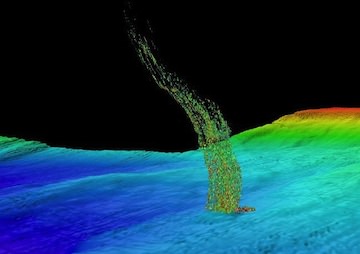
By Tim Radford, Climate News Network
Sonar image of bubbles rising more than 500 metres from the Pacific seafloor off the coast of Washington. Photo by Brendan Philip/University of Washington
This Creative Commons licensed piece first appeared at Climate News Network.
LONDON — Researchers studying methane trapped in frozen layers below the Pacific Ocean seafloor predict that more and more of the potent greenhouse gas could bubble towards the surface as the deep water begins to warm.
“We calculate that methane equivalent in volume to the Deepwater Horizon oil spill [in 2010] is released every year off the Washington coast,” says Evan Solomon, assistant professor at the University of Washington School of Oceanography in the US.
Methane hydrates are the natural gas methane in solid form. Volume for volume, methane is at least 20 times more potent a greenhouse gas than carbon dioxide, although it is released in smaller quantities and has a much shorter lifespan in the atmosphere.
Vast quantities of the stuff are known to be trapped in sedimentary rocks and in the sea bed, in “frozen” form — held by a combination of temperature and pressure.
Fastest warming
Until now, most of the focus has been on the methane hydrates in the Arctic, the fastest warming region on the planet.
But Dr Solomon, oceanographer and lead author Susan Hautala and colleagues report in Geophysical Research Letters their calculations that between 1970 and 2013, some 4 million tonnes of methane have been released from the sea floor off the coast of Washington state.
This is about the equivalent of the natural gas released in 2010 when the Deepwater Horizon oil well blew out off the coast of Louisiana, and 500 times the rate of natural release from the sea floor.

Coring machine used to gather sediment samples from deep in the Pacific Ocean.
Image: Robert Cannata/University of Washington
The Pacific Northwest has high rates of biological activity, and methane is a natural biological product. At high ocean pressures and low sea temperatures, it “freezes” or crystallises in a solid state. And because the waters of the Pacific Northwest have been so rich in life, the seabed below is rich in methane hydrates.
But ocean waters have started to warm, at depth, and currents have carried the warming water across the ocean to the North American shelf.
Atmospheric warming
As water warms, the submarine methane “ice line” retreats further offshore — rather in the way that a snowline moves up hill, or a glacier retreats, in response to atmospheric warming.
The Washington scientists calculate that, since 1970, the boundary at which methane stays frozen has retreated by about a kilometre. By 2100, it will have moved perhaps another three kilometres off shore.
Their calculations suggest that, by the century’s end, 400,000 metric tonnes a year will escape. And the puzzle now is where the released methane will end up.
Some could be consumed by methane-eating bacteria in the seafloor ooze. But fishermen have also observed the stuff bubbling to the surface, to add to the burden of atmospheric greenhouse gases.
The finding, the researchers say, has “worldwide implications” for other oceanic reservoirs of the stuff, close to continental shelves and therefore vulnerable to large-scale melting.
Your support matters…Independent journalism is under threat and overshadowed by heavily funded mainstream media.
You can help level the playing field. Become a member.
Your tax-deductible contribution keeps us digging beneath the headlines to give you thought-provoking, investigative reporting and analysis that unearths what's really happening- without compromise.
Give today to support our courageous, independent journalists.
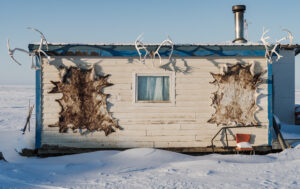
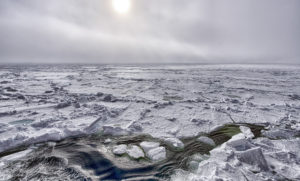
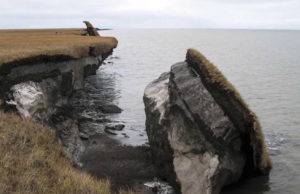

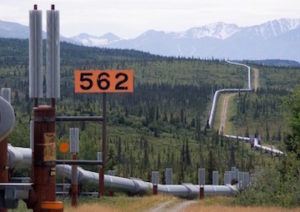

You need to be a supporter to comment.
There are currently no responses to this article.
Be the first to respond.